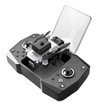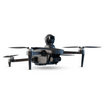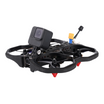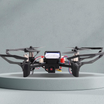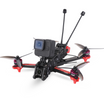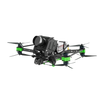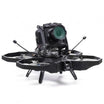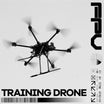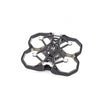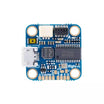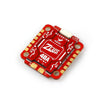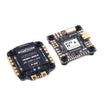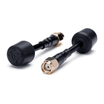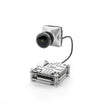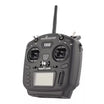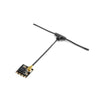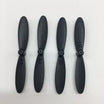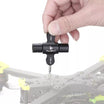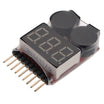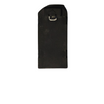A drone must withstand its weight and drag in order to fly. Drag is the force preventing the drone’s speed through the air, which is influenced by the reference area, air density, and flow velocity. On the other hand, the product of a drone’s mass times gravity is its weight. The propellers’ rotation produces thrust, allowing the drone to lift and maintain flight. At hover, we can consider that the propellers’ combined thrust equals the drone’s total weight.
Firstly, select a light frame such as a floss 2 or 2.1 for example. Also try using lighter components, including lighter screws and smaller carbon sections. Hardware contributes to the weight of a frame. Examine your drone and remove any unnecessary screws, as well as considering replacing screws to a lighter composition. Titanium screws, for example, are substantially lighter than steel screws while providing almost the same level of toughness. Always give preference to improved performance and extra flight time in consideration to enhanced durability.
Next, electronics, rather than putting the drone’s power line out the back, it can be run to the side to reduce the wire’s length and weight. Also, examine your wire gauge; you may be able to get same performance and save weight by using a thinner wire. You can also cut all the wires almost as short as they can be (leave a little extra bit for repairs). This way you’ll save weight and it’ll look cleaner.
The selection of motors can also help to reduce weight. Avoid using big motors. Try r4 2206 2700kv motors which are fairly small and therefore light, but not so small that they don’t have enough power to spin medium-heavy props. Light props fly well and they are still fast because of the high kv. Also with higher quality motors, the drone’s performance won’t be compromised, but rather improved. With some exceedingly small brushed DC motors accessible in the smallest sizes, motor technology has greatly advanced. Although reducing the size of the motors has a knock-on effect on lifting power, the total effect of miniaturising should enable for smaller drones with great mobility by reducing unnecessary weight in the motor and other components.
With regard to props, they don’t have a lot of weight fluctuation, but four of them are on each quad can add up quickly. One of the main disadvantages of a lighter prop is that it is less durable; nonetheless, in the event of a crash, many polycarbonate props will bend or break regardless of thickness (of the common props sold today). Polycarbonate props have high stability for their weight, but they cannot withstand numerous crashes. It is therefore preferable to purchase lighter props, as heavier ones will likely sustain equivalent amounts of damage in a crash. The reduced weight not only improves flying performance and duration, but that also makes the motors more responsive because they have less weight to spin up.
Despite the fact that lightweight batteries are frequently more expensive, they offer excellent performance. Buying lesser capacity batteries is a simple technique to reduce weight with batteries, which increases flight performance and reliability but not flight length. A more expensive battery is required to optimise flight performance, efficiency, and flight time. It is worthwhile to invest in a more expensive battery if you can afford it because they last longer and give higher performance and efficiency.

